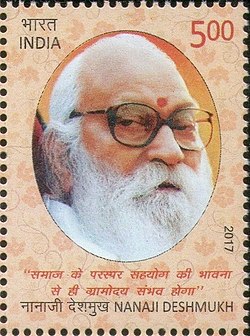Religious figures

- Nivruttinath (1273–1297) - older brother of Dynaneshwar; Varkari saint and philosopher [1]
- Dnyaneshwar (1275–1296) - 13th-century Marathi Varkari saint, poet, philosopher and yogi of the Nath Vaishnava tradition [1]
- Sopan (1277-1296) - saint of the Varkari sect; younger brother of saint Dnyaneshwar [1]
- Muktabai (1279-1297) - younger sister of Saint Dynaneshwar; Varkari saint and philosopher [1]
- Chakradhar Swami - 13th century Vaishnava saint; founder of the Mahanubhava sect. [2]
- Padmanabha Tirtha (Shobhana Bhatta) (samadhi 1324 CE), a Hindu Dvaita philosopher, dialectician, the direct disciple of Madhvacharya and the acharya who is known for spreading Tattvavada outside the Tulunadu region. [3]
- Jayatirtha (1345 – 1388) - a Hindu Dvaita philosopher, dialectician, polemicist and the 6th pontiff of Madhvacharya Peetha. [4]
- Morya Gosavi - a prominent 14th century saint of the Hindu Ganapatya sect. [5] [6]
- Narasimha Saraswati - A prominent 14th Century Indian Guru of the Dattatreya Tradition (Sampradaya) . According to the Gurucharitra, he is considered as the 2nd Avatara of Dattatreya in this yuga.
- Damaji - Prominent Saint of the Varkari Sect of Hinduism. He was the Kamavisdar of Mangalvedha under the reign of the Bahmani kingdom of Bidar
- Bhanudasa (1448–1513) - a Hindu Varkari saint and devotee of Vithobha. [7]
- Purandara Dasa (1484 - 1564) - a Haridasa, Dvaita philosopher and saint; Pitamaha of Carnatic Music. [8]
- Janardan Swami (1504 -1575) - a prominent Marathi sant, a poet of Varkari sampradaya, a devotee of Dattatreya and the guru of Eknath. [9]
- Vijayindra Tirtha (1514 - 1595) - a Dvaita philosopher, dialectician and prolific writer, who authored 104 works on Dvaita Vedanta. [10]
- Raghuttama Tirtha (1548 - 1595) - a Dvaita philosopher, scholar, saint and mystic; 14th pontiff of Uttaradi Math [11]
- Eknath (1533–1599) - Marathi saint, scholar, and religious poet of the Varkari Sampradaya [12]
- Saraswati Gangadhar - 16th Century poet and author of Gurucharitra. Even though his mother tongue was Kannada, he was considered a prolific writer in Marathi.
- Dasopant (1551–1615) - Marathi poet-saint and prolific writer of Varkari sect.; also known as Daso Digambar [13]
- Vaman Pandit (1608–1695) - a Marathi poet and scholar, who composed poems and kirthanas on Lord Krishna and gave a sound metaphysical foundation to the concept of Bhakti in Maharashtra. [14]
- Raghunath Pandit - a 17th-century Marathi poet, scholar of Pant-Sahitya. [15] [16]
- Samarth Ramdas (1608–1681) - Hindu Vaishnava saint from Maharashtra [17] [18]
- Shridhar Pandit (Shridhar Swami Nazarekar) (1658–1729) - author of works of devotional literature in marathi: Harivijaya , RamVijaya , Shivlilamrut , PandavaPratap , and the AmbikaUdaya ; his real name was Khadake Nazarekar [19]
- Vijaya Dasa (1682–1755) - a prominent Hindu saint from the Haridasa tradition of Karnataka, India. [20]
- Mahipati (1715–1790) - author of Bhaktavijaya, a Marathi language biography of Varkari and other Hindu saints [21]
- Satyadharma Tirtha (1743-1830) - a Dvaita philosopher, scholar, saint and mystic ; 28th pontiff of Uttaradi Math . [22]
- Manik Prabhu (1817 - 1865) - An early 19th-century Hindu Vaishnava saint, philosopher, poet and mystic. [23]
- Bhausaheb Maharaj (1843 - 1914) - a Hindu saint, philosopher and founder of Inchegeri Sampradaya. [24]
- Brahmachaitanya (Gondavalekar Maharaj) (1845 - 1913) - a Hindu Saint, a spiritual Master, and a devotee of Lord Rama, who advocated Namajapa using the 13 letters Ramanamamantra —"Śrī Rām Jai Rām Jai Jai Rām" to attain enlightenment. [25]
- Shri Madhavnath Maharaj (1857–1936) - Hindu saint, of Karvi, Chitrakoot, Madhya Pradesh, who continued the Nath Sampradaya of the famous Navnaths in India. [26]
- Shreedhar Swami (1908-1973) - a prominent Kannada-Marathi saint and religious poet in the Hindu tradition. He was a devotee of Lord Rama and a discple of shree Ramdas Swami. [27]
- Shriramkrishna kshirsagar






